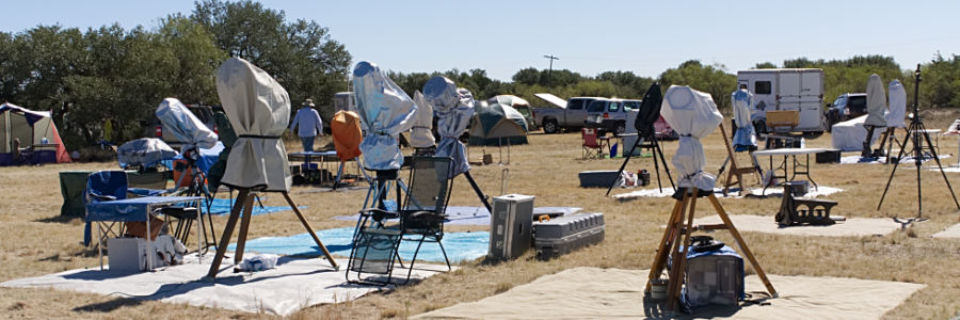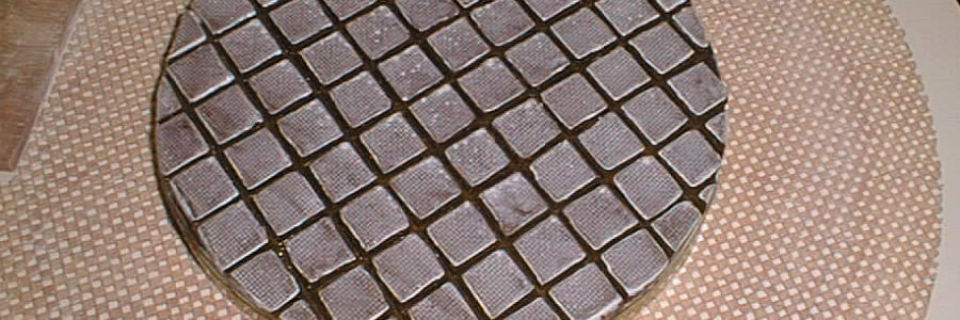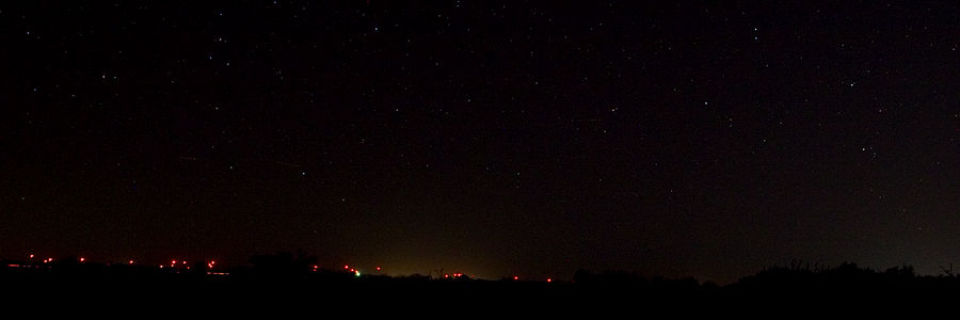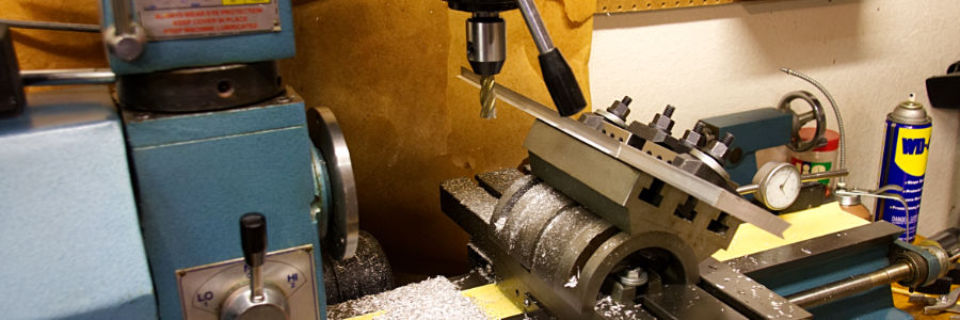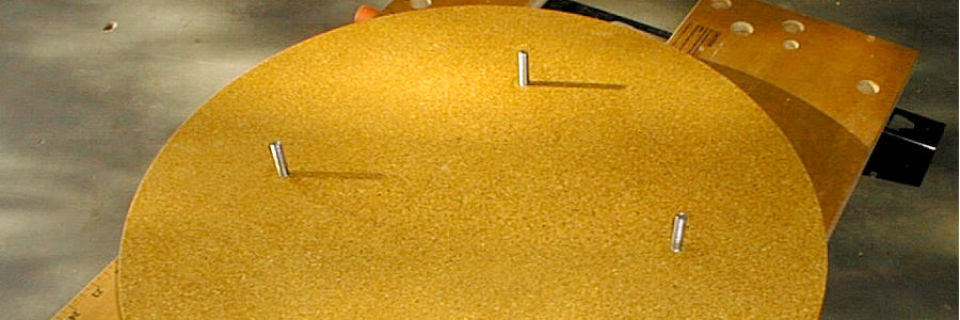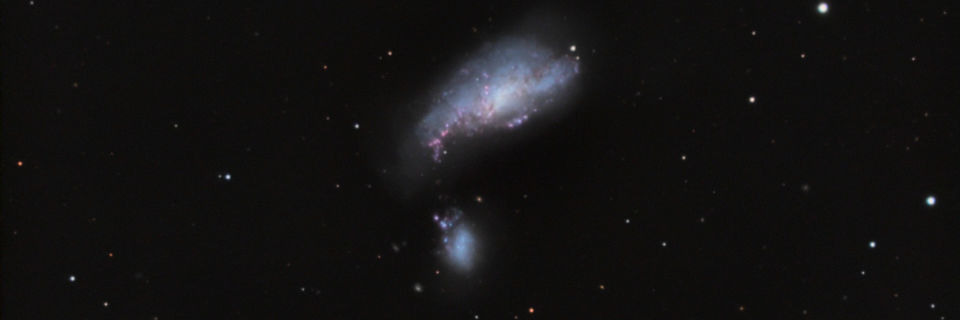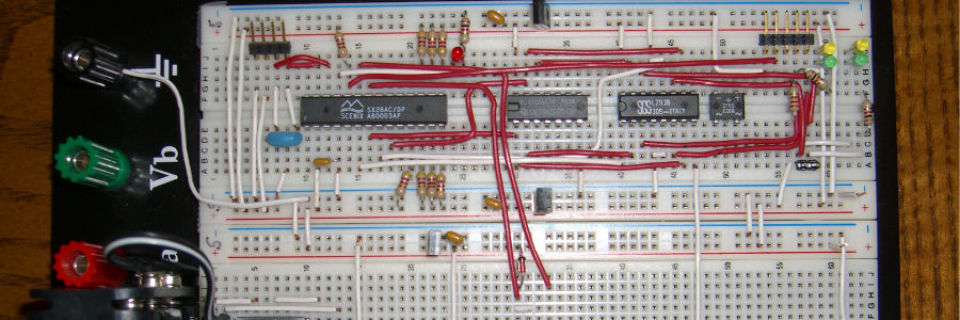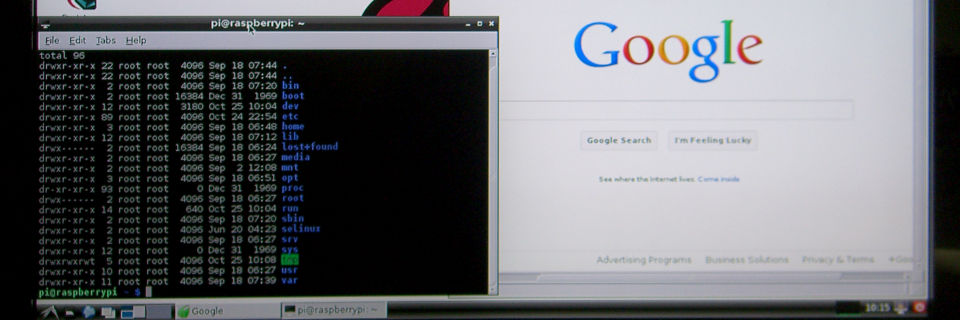Feature Article Index
Tips, Techniques, and Projects for the Amateur Telescope Maker / Astronomy Enthusiast
John D. UptonPage Last Updated: March 27, 2018
Feature Article Topical Index
The articles indexed on this page are feature length, detailed articles covering some of the many aspects of amateur telescope making. They offer full descriptions of techniques the author has used and often include step-by-step instructions for projects readers may freely copy, use, modify, or leverage for their own DIY telescope and general astronomy accessories.
An Eyepiece Storage Case
Very durable padded aluminum cases are available for storing your eyepieces these days. In many instances, these cases are quite reasonably priced. This project shows how I personalized one such inexpensive case to hold my eyepiece collection.
SkySensor2000 PC Internal Battery Replacement New
If you own and still use a Vixen SkySensor2000 PC mount control box for the Great Polaris and other GEM mounts, you may have noticed that it no longer holds correct time and the defaults for your location are also missing each time you power up. The SkySensor2000 PC uses an internal battery to power its real time clock and hold your location defaults. After 15 to 20 years, these batteries are finally failing. The battery was not meant to be user replaceable but with care, the owner can follow this procedure to bring the unit back to full functionality.
Meade 7" LX-50 Maksutov (Review)
This review of the Meade 7" Maksutov-Cassegrain LX-50 was published on Compuserve in March 1996 and later reposted on the USENET newsgroup sci.astro.amateur with my permission. The original review is followed here by some of the discussion which ensued on Compuserve in the next week. The bottom line conclusion of the review is the Meade Maksutov is a good but by no means perfect telescope for the planetary and double star enthusiast. Like all commercial telescopes, it has both strong and weak points.
Meade Field Tripod Modifications
Have you ever wished setup of your Meade Schmidt Cassegrain telescope using a wedge was easier? Do you find it awkward and needless to have to assemble the tripod and wedge prior to mounting the telescope? If so, try out this (reversible) modification to the Meade Field Tripod which makes using a wedge hassle free. Return to the days of old when the wedge was a more convenient, integral part of the tripod assembly.
Making A Tile-On-Plaster Tool
The well known optician Tom Waineo advocated making plaster-based grinding tools. His method of attaching the tiles to the plaster substrate utilized paraffin wax as the bonding agent. I have used his method and found it to have both advantages and drawbacks. Here is a description of my implementation of the Waineo technique and my experiences with using such tools.
Fast Mirror Grinding and Polishing
Many ATMs, by their very nature, are experimenters. This article discusses some of the odd techniques I have used in grinding and polishing mirrors. Some were successful, others were tried and discarded for one reason or another. Most of these may be old hat to you, but you may find something new and useful here.
The Dykem Test
The establishment of intimate contact between an optical component and its tool during processing along with the complete removal of pits are two of the most important foundations in all optical fabrication. Over the years, a number of techniques have been devised to help in these areas. Here is a new technique that performs both functions very well and can help lead to excellent surface quality in your optical projects.
Making A Pitch Lap
The best method of making pitch laps for polishing optical surfaces is an area where few ATMs agree. There are a great number of methods, all of which work in the end. Which is best is often in the eye of the beholder. Described here is one of many variations of the Hot Channel Cutter method I use. It has evolved from a number of methods I have seen and my own experiences in making quite a few laps. I, like most ATMs, am very opinionated when it comes to lap making and find this method relatively quick, very easy, and above all, not at all messy.
Testing For Quality Of Polish
A question often asked by first time telescope mirror makers is "How can I tell when my mirror is completely polished?" The three most common methods of testing for quality of polish by amateurs are microscopic inspection, the sun test, and the laser test. This article explains how to perform these simple and useful tests.
14" Mirror Making Log
This is a log of one of my ATM mirror making projects. It will allow others to see the long winding road complete with wrong turns, detours, and small successes that all glass pushers encounter. First time mirror makers may be able to learn from my many mistakes.
Modular Optical Tester Design
Mirror making and optical fabrication can become quite addictive to many telescope makers. After finishing their first mirror, some ATMs go on to make more telescopes of greater complexity. In addition, ATMs want to improve the quality and performance of their subsequent optics. Many will resort to using different or additional testing procedures. Presented here is a versatile, modular design for a tester optimized for performing the Ronchi Test, Foucault Test, Wire Test, and Ross Null Test.
Digital Readout Caustic Tester
This short article shows some details of T. Lum's digital readout Caustic tester. Like all Caustic tester designs, this one can also be used for many of the other common ATM mirror testing methods. Built to a high degree of accuracy, it may be used to perform the Caustic, Foucault, Wire, and Ronchi tests.
The Matching Ronchi Test
The Matching Ronchi Test for telescope mirrors is very easy to set up and use. Once you understand the basic principals involved, you can use this test to help figure your mirror. Even beginners can quickly learn to visually interpret what the test is telling them about the shape of their mirror. This article is intended to give you the background you need to begin using the Matching Ronchi Test.
Understanding Foucault
For those of you contemplating making your own mirror, David Harbour offers a new, easy to understand explanation of the most capable testing method for monitoring the developing figure on your mirror - the Foucault Test. Included are new concept illustrations that are sure to help you thoroughly and quickly master the basis of the Foucault test.
The Dall Null Test
The relative ease of making spherical optical elements is made possible by the ease in testing them. Spherical optics may be tested at their center of curvature. When tested in this way, the optical element is finished when it nulls - its appearance is flat and devoid of telltale shadows under test. This same concept may be applied to many non-spherical surfaces using a variety of null tests. One of the easiest to implement and use is the Dall null test.
Setting Up The Dall Null Test
Follow this tutorial to set up the Dall Null test for your mirror. Learn to use the power of the optical design program OSLO-LT to calculate the correct setup parameters. You can also use OSLO-LT to help you determine the quality of null to expect from this test as well as how much error latitude you have in assembling the tester.
An Eyepiece Storage Case
Very durable padded aluminum cases are available for storing your eyepieces these days. In many instances, these cases are quite reasonably priced. This project shows how I personalized one such inexpensive case to hold my eyepiece collection.
Computer Control Of A SynScan MountNew
Connecting your SynScan (SkyWatcher or Orion) telescope mount to a PC is not very difficult once you decide on a particular set of features, methodology, and hardware you wish to use. In this article, your choices for making the connection will be outlined and detailed connection methods described. These methods are suitable for both visual use as well as astrophotography.
Windows 10 Night Vision ModeNew
Windows 10 has added features that are quite helpful for use in the field at night while enjoying astronomy. This article describes how to customize Windows 10 so that all of your astronomy software applications can be used in deep red "Night Vision Mode". No special hardware or software is required. Just customize Windows 10 settings and enjoy benefits similar to using Rubylith or other dark red filter over your screen -- all without the filter.
Digital Readout Caustic Tester
This short article shows some details of T. Lum's digital readout Caustic tester. Like all Caustic tester designs, this one can also be used for many of the other common ATM mirror testing methods. Built to a high degree of accuracy, it may be used to perform the Caustic, Foucault, Wire, and Ronchi tests.
The Smithy CB1220XL (Review)
If you are cramped on workshop space or on a tight budget, a 3-in-1 combination metalworking machine may fill the bill. While not as versatile as a separate lathe, milling machine and drill press, these machines are capable of performing all the functions required for machining a wide variety of precision parts for your telescope projects. Read further for the details.
The Grizzly Radial Drill Press (Review)
If you are cramped on workshop space or on a tight budget, a 3-in-1 combination metalworking machine may fill the bill. While not as versatile as a separate lathe, milling machine and drill press, these machines are capable of performing all the functions required for machining a wide variety of precision parts for your telescope projects. Read further for the details.
An ATM's Grinding Barrel Top
While not required for optical work, a grinding barrel that gives easy access all around is a nice convenience. This article describes the construction of a top for the grinding barrel that is attractive, durable, and easy to clean.
The Grizzly Radial Drill Press (Review)
If you are cramped on workshop space or on a tight budget, a 3-in-1 combination metalworking machine may fill the bill. While not as versatile as a separate lathe, milling machine and drill press, these machines are capable of performing all the functions required for machining a wide variety of precision parts for your telescope projects. Read further for the details.
Orion Starshoot DSCI First Light
The new Orion Starshoot Deep Space Color Imaging camera is primarily designed for deep sky photography. My first introduction to the camera is to be lunar and planetary photography. My Meade 7" Maksutov is not well suited for deep sky imaging but at F/15 should be very good for pursuing my interests in lunar and planetary observing.
Computer Control Of A SynScan MountNew
Connecting your SynScan (SkyWatcher or Orion) telescope mount to a PC is not very difficult once you decide on a particular set of features, methodology, and hardware you wish to use. In this article, your choices for making the connection will be outlined and detailed connection methods described. These methods are suitable for both visual use as well as astrophotography.
Windows 10 Night Vision ModeNew
Windows 10 has added features that are quite helpful for use in the field at night while enjoying astronomy. This article describes how to customize Windows 10 so that all of your astronomy software applications can be used in deep red "Night Vision Mode". No special hardware or software is required. Just customize Windows 10 settings and enjoy benefits similar to using Rubylith or other dark red filter over your screen -- all without the filter.
SkySensor2000 PC Internal Battery Replacement New
If you own and still use a Vixen SkySensor2000 PC mount control box for the Great Polaris and other GEM mounts, you may have noticed that it no longer holds correct time and the defaults for your location are also missing each time you power up. The SkySensor2000 PC uses an internal battery to power its real time clock and hold your location defaults. After 15 to 20 years, these batteries are finally failing. The battery was not meant to be user replaceable but with care, the owner can follow this procedure to bring the unit back to full functionality.
Modular Optical Tester Design
Mirror making and optical fabrication can become quite addictive to many telescope makers. After finishing their first mirror, some ATMs go on to make more telescopes of greater complexity. In addition, ATMs want to improve the quality and performance of their subsequent optics. Many will resort to using different or additional testing procedures. Presented here is a versatile, modular design for a tester optimized for performing the Ronchi Test, Foucault Test, Wire Test, and Ross Null Test.
An Ultra-Violet Exposure Frame
You can build this exposure frame for making printed circuit boards. You will soon discover that it has quite a few other uses also. Install regular fluorescent bulbs and use it as a small light table for searching out pits on your optics or use it for sorting or stacking photographic slides or negatives.
Simulating The Ronchi Test
Here, you can learn about the internal workings of a simulation program for the Ronchi Test. These are the techniques that have gone into the Freeware program Ronchi for Windows. You can duplicate these formulae and techniques in your own Ronchi program while adding the features you need or desire. You may also find this information valuable in other ATM programming pursuits as well.
